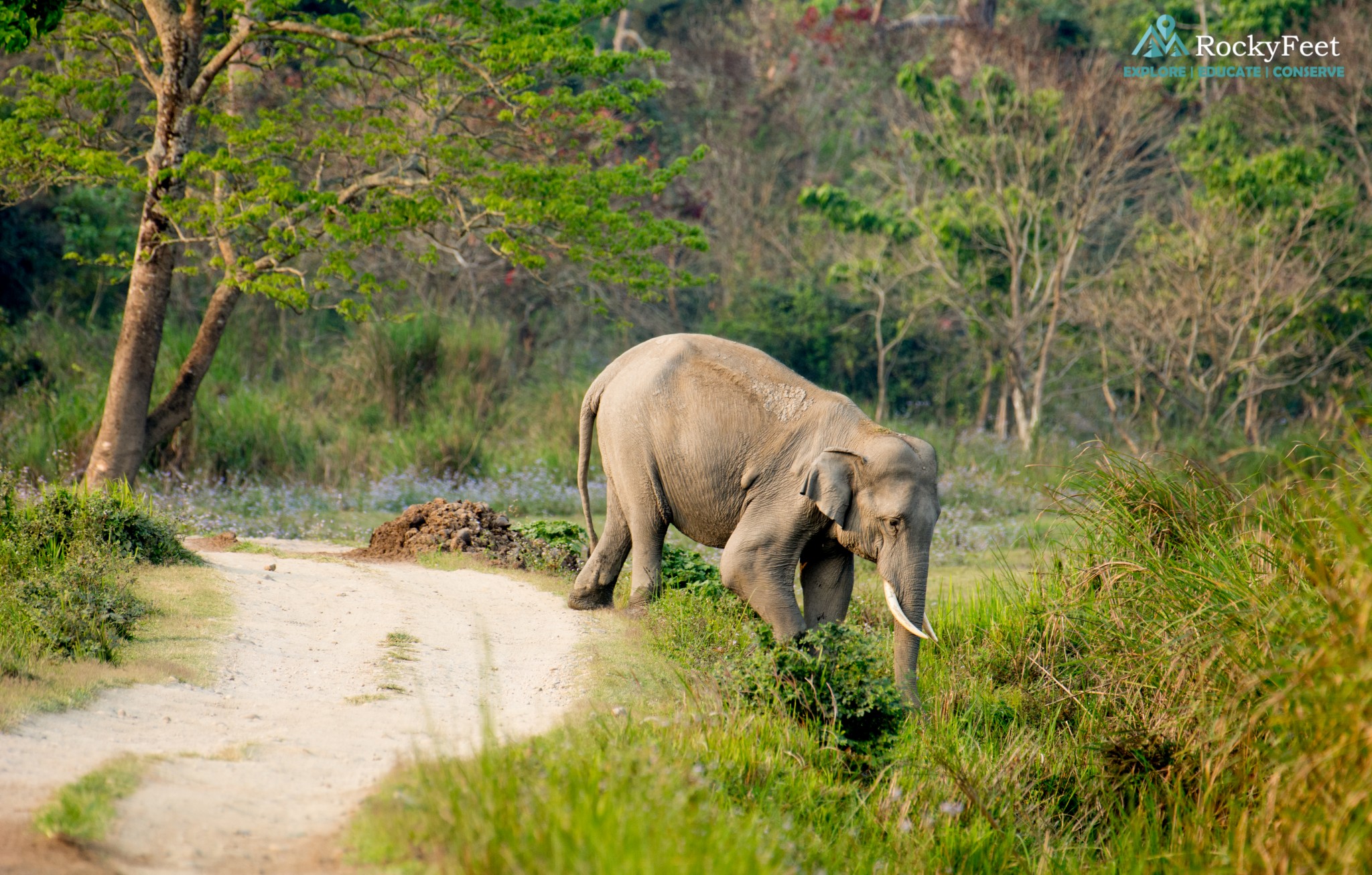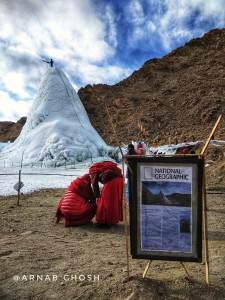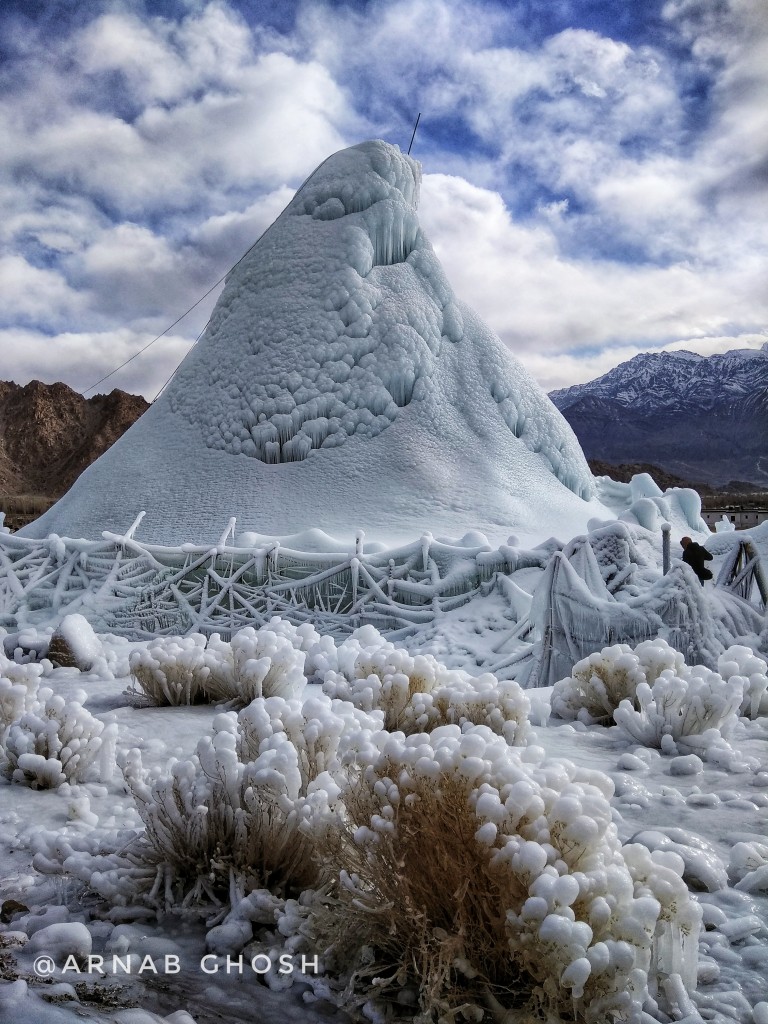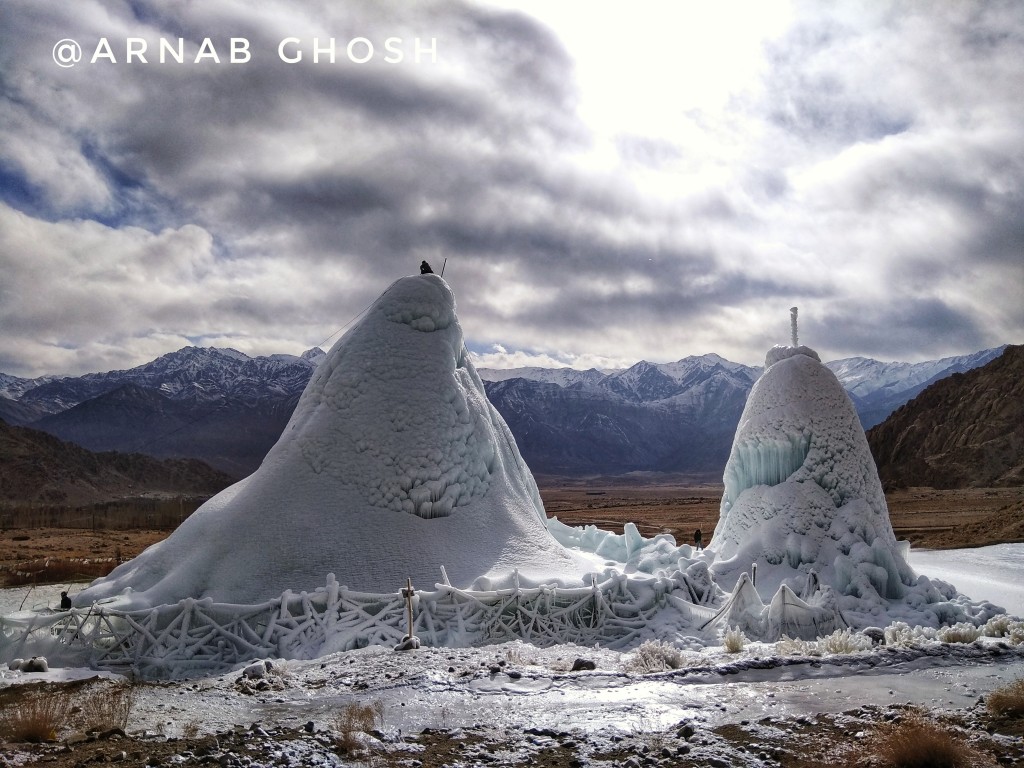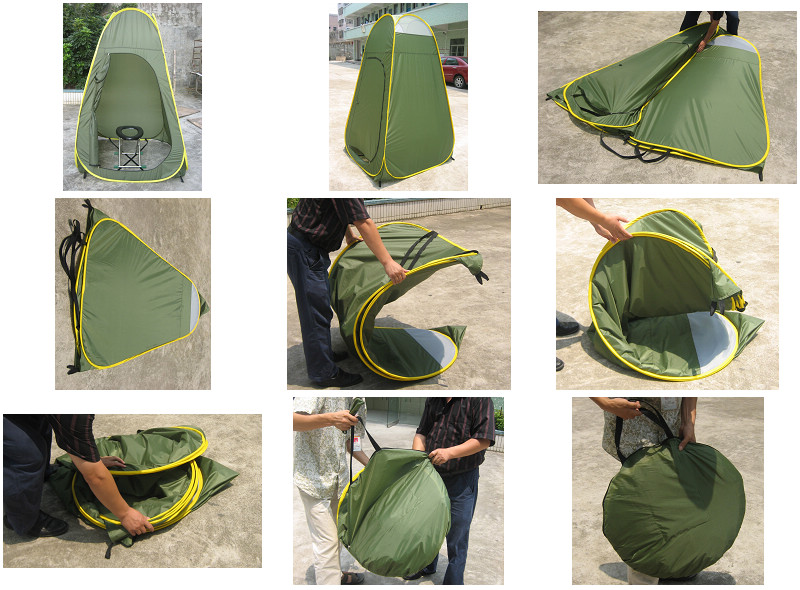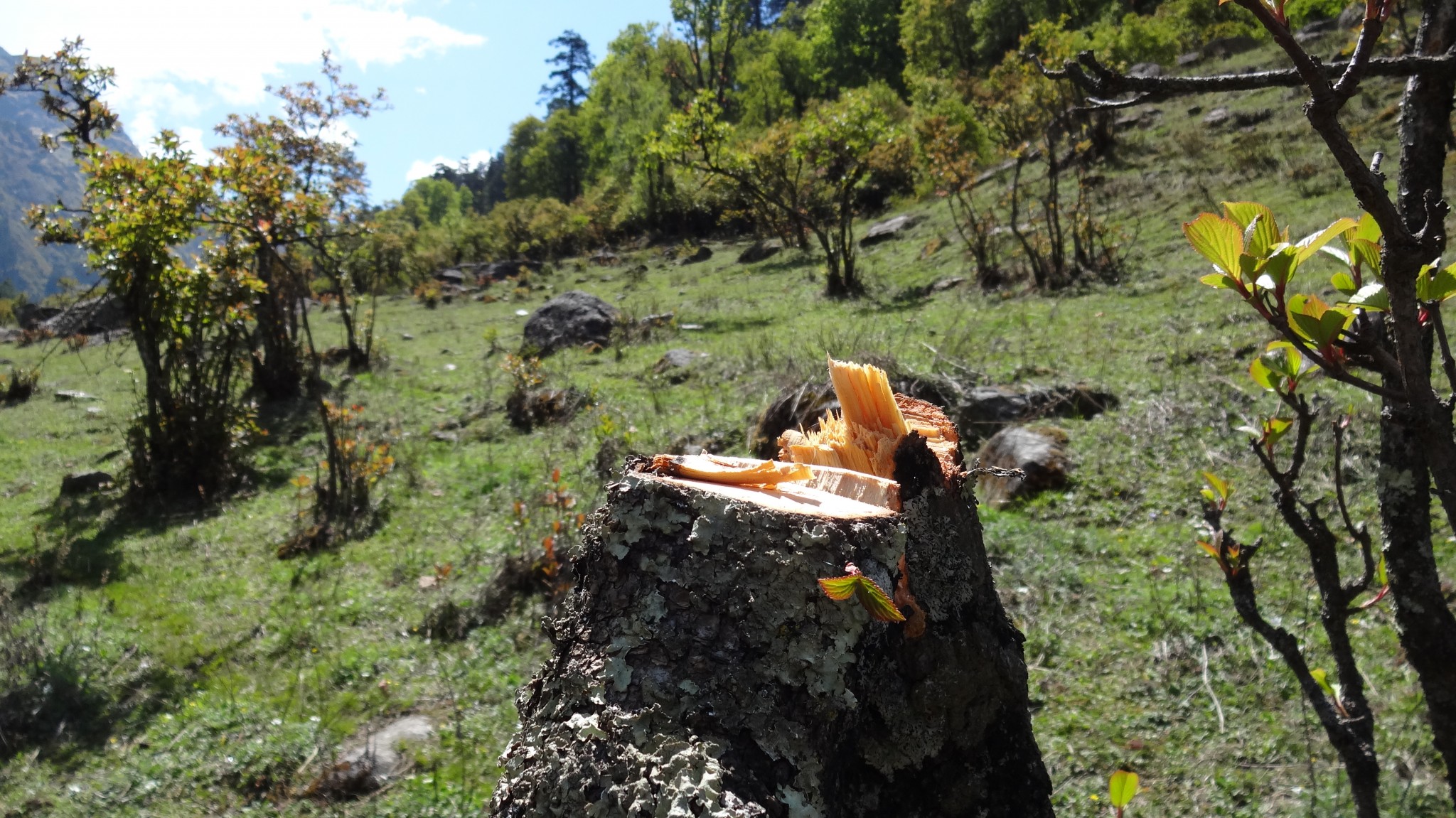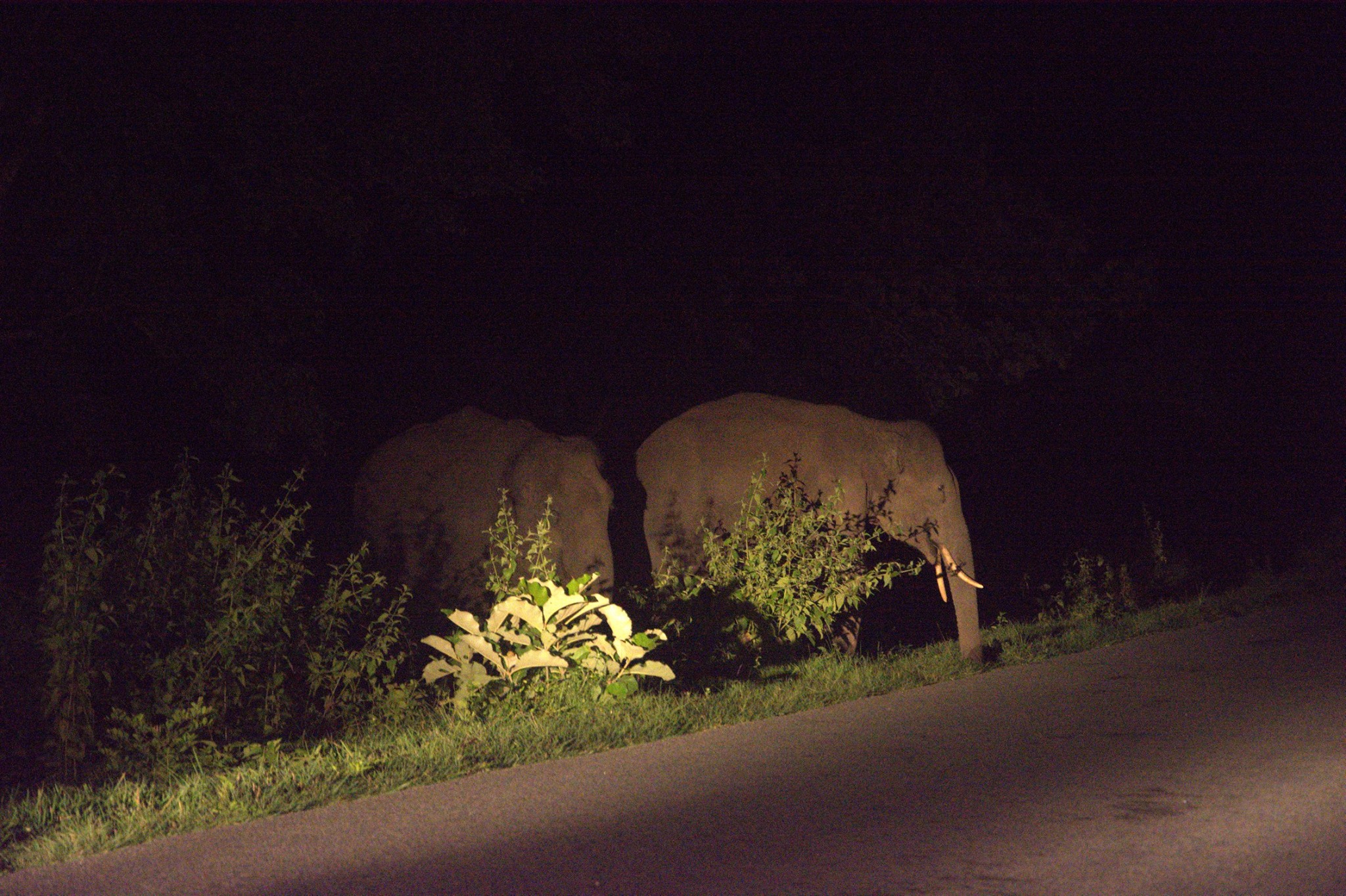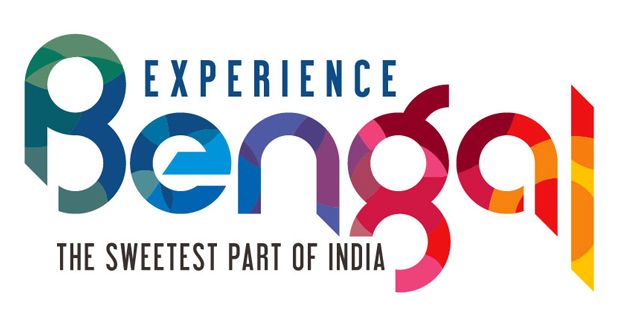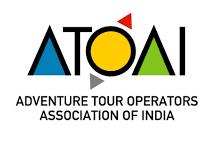Running with the wild:
We have one life; one life of exploration, one life for understanding the world around us, its morals, its values and the intricacies tying up the wind, water, soil and the air with the life that moves around us in frames of time, quite different from our own individual perceptions.
I am a wildlife enthusiast in the pursuit of a deeper understanding of Nature; a pursuit through continuous exploration of the natural world and the intricate and often beautiful principles that govern it. It takes me from chasing common kingfishers who have lost their brilliant shine from frequent fishing dips in the canals transporting sewage in Kolkata to places well preserved through history, places like Kaziranga National Park.
In all my three visits to Assam in the first three months of 2018, I have been to Kaziranga National Park. This is a short account of the mammals of the park and it surroundings, including possibly the greatest of great apes to have spread across the blue-green-white planet we share with blue whales, rhinos and polar bears, human beings.

A Rhesus macaque feeding on the nectar of Indian Silk Cotton tree (Bombax ceiba)
The River:
Taking the NH 27 from Guwahati towards Kaziranga, one can find signs of the wild nature of the Brahmaputra flood plains of Assam. No statistic could truly measure the river’s importance for the wilderness and the civilizations of Assam. While crossing the river from Majuli to Nemati Ghat during my first visit in Assam, I could only imagine the extent to which the Brahmaputra must grow during the months of monsoon.
During my 2nd visit, standing by the river in the eastern range of Kaziranga National Park, a college professor leading a batch of students of biology mentioned that there are many bridges across this river and the longest of them is about 7.5 kilometres across. Well, that’s a statistic right there, for testing our power of comprehension. The river is the lifeline of one significant moist patch on the map of the world. However, the dual nature of the universe means that its life-giving characteristic comes with the bane of massive floods during the monsoons, displacing wildlife and people, even taking many lives with it on its westward journey.

The Park perimeter:
Kaziranga National Park is divided administratively into 4 parts, the Western, Central, Eastern and Southern ranges. The three distinct habitats found in the park are swamps/marshlands, grasslands and woodlands. Taking Jeep Safaris through the first three ranges, it is evident that the western range is marshier, the central range is dominated by tall elephant grass while the eastern range takes one deep inside tropical woods of Ajaar (Crepe-myrtle), Shimul (Indian Silk Cotton), Chalta (Elephant Apple) and Amloki (Indian Gooseberry) among others. However, all ranges display mixed habitats. These three ranges are bounded to the south by the NH27 and to the north by the Brahmaputra.
- Habitat of Kaziranga National Park – Feb 2018
To the south of the highway lies the southern range, where exploration happens on foot. I have not been to this part of the park but it lies in the hills which run along the road with the region in between being excellent tea country. In the regions where there are no tea estates by the road, the forests are excellent habitat for Capped langurs as I got to learn from our guide during my 3rd visit to the park. Coming from a tea fanatic, this hot beverage that wakes us up every morning has put a lot of forests of the Himalayan Terai to sleep ever since its introduction by the British in the 1820’s.
- A tea garden at Kohora, Assam (Kaziranga)
Life of Mammals:
Kaziranga is often termed as the ‘Savannah of the east’. This is because these habitats are excellent country for the so called ‘Big 5’ to call it their home. They include the African relatives of Elephants, Rhinos, Water Buffalos, Leopards with only the African Lion being replaced by the Royal Bengal Tiger.
Kaziranga is home to two-thirds of the world’s population of the One-horned rhinoceros. Rhinos all around the world have been poached to near extinction mostly because the keratin (same tissues found in our fingernails and hair) in their horns wrongly find their place in Chinese traditional medicine as an ‘aphrodisiac’ for men, just another example of our patriarchal existence and a society entangled in the web of illusion that has locked up every one of us to various extents.
From a few conversations I could get the idea that about 900 guards are employed in the park mainly to protect the rhinos from invading poachers from Nagaland. The guards are armed with old rifles that found their use in World war II whereas the poachers carry weapons which are technically sounder. Still, the numbers of rhinos have risen in the 2015 census to 2401. I hope that the park authorities derive great pleasure from the fact and I am sure there will be motivated efforts in the future to keep the poachers and this merciless business at bay.
- A Jungle crow enjoying a rhino-back-ride
Two other magnificent creatures who are targeted by poachers are the Asiatic elephant and the Royal Bengal Tiger. The last survey recorded the number of tigers in the park to be 106, which incidentally is the highest density of tigers anywhere in the world. During the months of February and March, controlled burning of grasses are done in the park by the authorities to encourage the growth of fresh grass for grazing within the park’s boundaries. The boundaries are mostly defined by the river and the lands of human interest. The emptied-out grasslands give good opportunities for wildlife enthusiasts to spot the otherwise shy tigers whose cover is blown. In my three visits, I have failed to see any tigers though. The closest that I came to seeing one was in my most recent visit in March 2018. We were crossing a huge waterbody in the central range where there had been recent sightings. The Safari crew of a Gypsy who were lying in wait at the spot informed us that two tigers had just swam across the pond and headed in a southward direction, before vanishing on the other side. I stood and stared and played the visual in my mind. The only reassurance was that the life I have chosen would surely provide me with opportunities of witnessing this royal creature in its diminishing home.
The number of elephants cannot be specified as these giants keep moving in their herds, the patterns of which must be keeping passionate behavioural biologists many a sleepless night in their dens.
Alongside these giants, Kaziranga is also home to the largest population of Asiatic Water Buffalos, the only living population of the eastern subspecies of Swamp Deer (1148 individuals), with the males showcasing their massive antlers within herds comprised mostly of females. I was lucky enough to have witnessed a substantially large herd of these magnificent, calm and curious animals on either side of our Safari trail. We had cut across their mini migration in search of fresh grazing and aquatic plants to chew on.
- Asiatic water buffalo crossing a safari trail in the central range.
Reports say that there are only 58 individuals of the vulnerable Sambar deer within the park. I was lucky to have witnessed a male within the woods of the central range. To be honest though, we were focussed on searching for the big cat that day, and this less probable sighting was only a mere consolation back then.
- A lone male Sambar peeping through the Crepe-myrtle forests in the central range.
The Hog Deer are numerous throughout the park. I think there was not even a measure to survey for their numbers as there are other monumental tasks at hand for the park officials. The Hog Deer can be found in the woods, within the tall elephant grass as well the wide open expand of Mashes and around the waterbodies. They seem to have successfully adapted to the conditions of these mixed wilderness. The other substantially large mammal is the Wild Boar who can be quite bold and land up right beside the trail, with their children grazing alongside. All these animals are quite habituated with the green Gypsies with people and the sound of their engines that constitute a sizeable portion of the soundscape within the park.
- A female Hog deer captured from the back of an elephaqnt in the Western Range – Jan 2018
Another part of the sound scape must be occasional gunfire. In February 2018, during my 2nd visit, a gunshot had rung out in the Eastern range followed by the wing beats of a flock of bar-headed geese, scared and fleeing in the opposite direction. The optimist in me is sure that it was from one of those World war II rifles of a guard doing his rounds on foot, trying to scare-off a lone Tusker on its morning trudge.
One magical sound that is a part of the sound scape of the region, is that of a trumpeting elephant. In contrast to the quick and burning hot shot of a gun that shoots its way across in every direction, the trumpet is long, warm and bellows through the forests and aims not for the sky but more towards the land; to inform its family of its location and possibly to warm its enemies. I had the luxury to witness such an event when a sub-adult elephant had crossed the trail in front of our Safari, crossed over a narrow stretch of water to the right to reunite with its family on the other side. It kept blowing its trumpet, as if asking for its herd to not leave it behind as it hurriedly swam across towards them.
- The reunited herd of elephants in the Eastern range – Mar 2018
Compared to the elephant, the rhinos are calmer, gentler and can be seen from close range, largely inactive and getting high on some good grass. The floods must change the course of life within the park. Some large mammals head towards the south, crossing the highway in the process and taking resort in the hills that lay out of harm’s way. There are natural high grounds in the lower regions called chapories. The authorities have built some chapories as well for animals to take resort during the high floods. All other challenges take the back seat of the open-hooded Gypsy of life. Life must hang on the edge of rising water levels for a few days before the mighty river recedes, leaving behind rich silt for the wilderness to sustain till the next turn of the wheel of fate.
- Rhinos grazing in the central range – Jan 2018
Man, Mahout and Mishing:
No big mammal is of more significance to Kaziranga National Park than human beings. It is us, who have defined its boundaries in the first place; be it through constriction of the wilderness by settling down in these rich lands suitable for husbandry or administrative measures of conservation.
It was announced as a Reserve forest back in 1905 during the British rule in the sub-continent. Up a few further steps of amendment, Kaziranga became a National Park in 1974, almost three decades after the British had left.
The administration at the park also employ a few elephants and their ‘man’ gods, the mahouts. There are many more elephants owned privately. People invest millions of rupees in these animals who in turn return the amount by carrying around Safarists on their back in the western range, every morning.
The mahouts spend most of their waking hours caring for their huge vahanas; from feeding them to elaborate sessions of bathing, like they were their own children. However, the relationship between an elephant and its mahout is mostly bittersweet to the eye. The upsetting sight of the god beating its vahana around the head with a metal rod to maintain command, is very common. It’s almost difficult to fathom the idea of a such a massive and intelligent being to give in to the aggression of their man gods. I assume that in this age of financial competition and economic growth, the love between an elephant and its mahout is getting damaged further in the eagerness and the pressure to earn the extra buck.
- Mahouts bathing their elephants by the highway in Kohora – Feb 2018
On the southern boundaries of the western and central ranges of the park, live the Mishing tribe who had migrated hundreds of years ago from the north of the river. They carried with them the knowledge of fishing and survival by the mighty river. The Mishing huts are made of bamboo. They have thatched roofs and the floors are elevated roughly six feet above the ground as a measure against the floods. There are separate huts as granaries, smaller than the living huts.
The duties in the farmlands and ponds are shared by both men and women. I had walked up to Mishing man, who had just finished with his days fishing. He was throwing away the snails that he had caught on his net and the residue were small fishes. I was eager to understand his way of life and we talked for some time. I came to know that he knew six languages – Mishing, Assamese, Hindi, Bengali, Nepali and English. I was awed by this revelation and went around asking more people the same question. I came to know that most of them were quite adept in the first five languages in the list.
- The Mishing tribe in their daily life by the water – Kohora, Feb 2018
It is a must for every Mishing woman to learn the art of weaving from a very early age. Some girls weave the clothes for their wedding day which lie years into the future. All the mandalas and patterns woven on cloth are woven with the thread of imagination first, the language of art. One girl mentioned that all the patterns that she makes are unique and never repeated again. I am conflicted by the idea as to whether their complex weaving machine (made of bamboo) is more impressive than the handloom themselves. If there has to be a conclusion, I would suggest that it is the handloom. It is the product of un-weaving the mysteries of the complex machine first to weave the fine pieces of mosaic.
- A Mishing girl busy weaving at midday – Kohora, Feb 2018
I wonder, if on a rainy day during monsoon, the civilized and the wild come together, displaced by rising flood waters to their elevated islands of hope, in the form of bamboo huts and mud embankments. With the water, life must rise above the scripted languages of mankind to the whims of the unspoken and unheard words of Nature. The language of the wild.
The knife edged southern border of Kaziranga National Park that lies between the majorly civilized world and one of its wildest patches is home to the Mishing tribe. They, on one hand have learnt to communicate with the outside world of modern men. On the other side, the music of the river plays in the background as stories are written in the language of the wild every day, some tragic ones ending with the fire of a gun.
